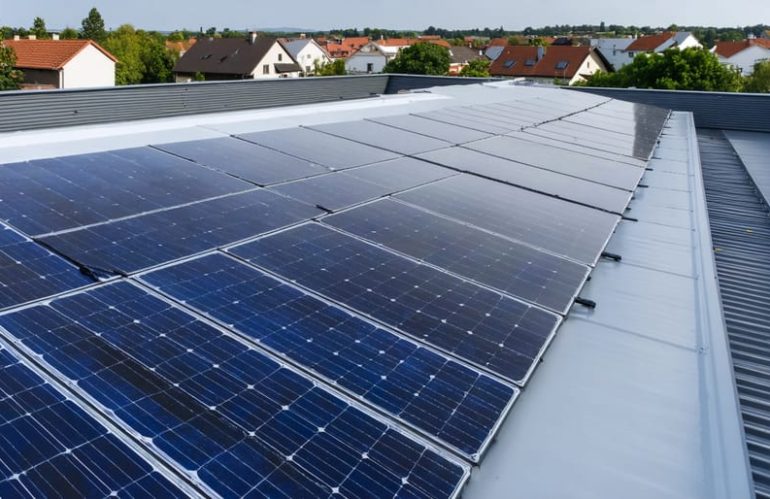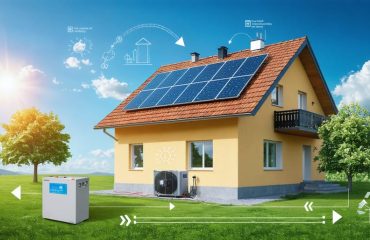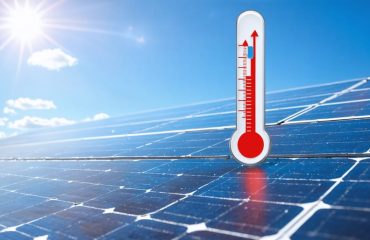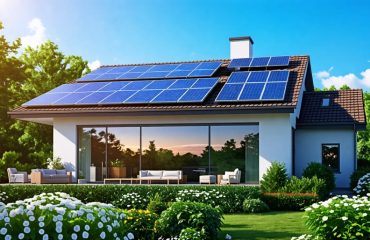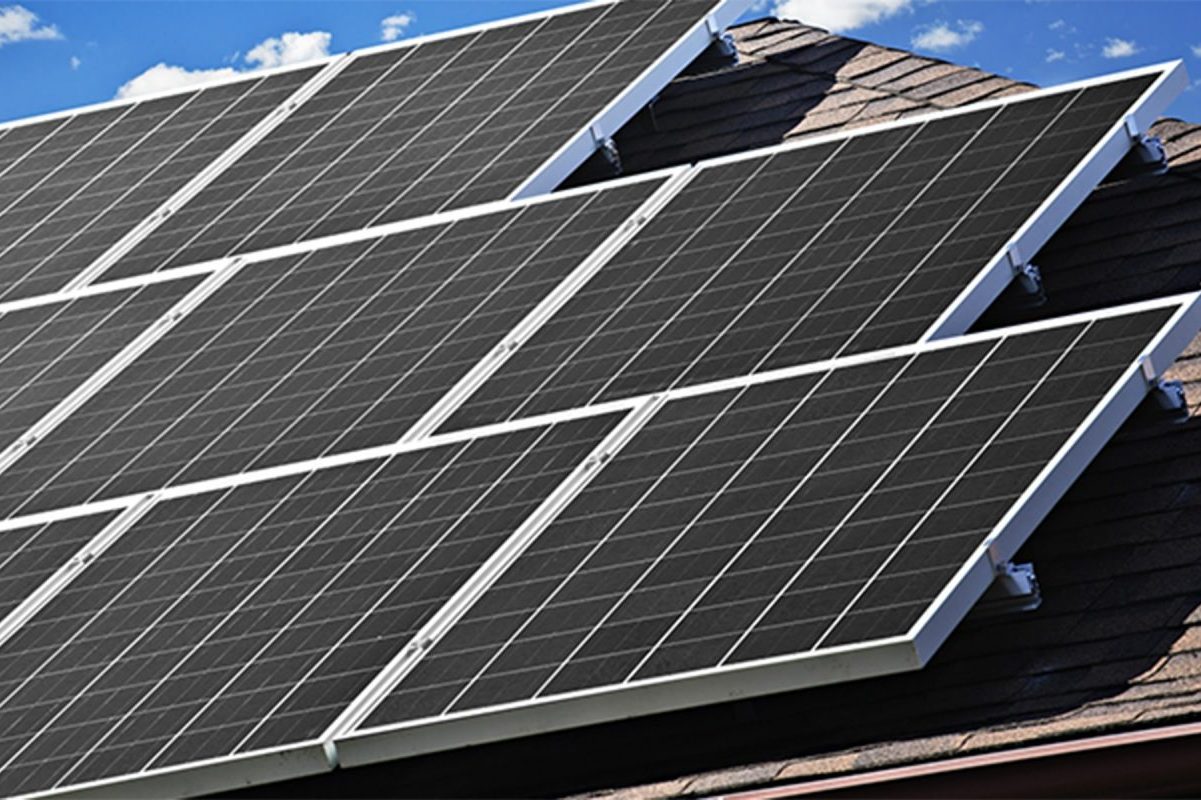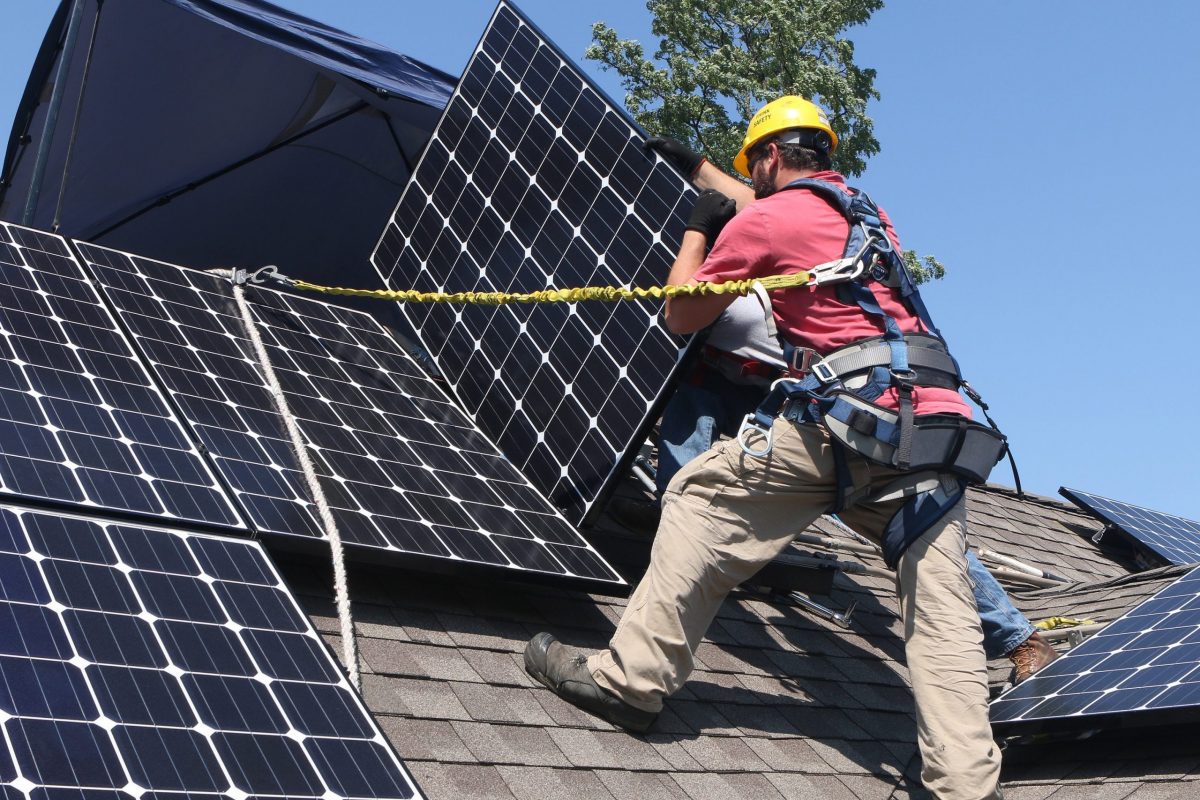Imagine slashing your energy bills while helping the planet – that’s the power of PV thermal panels, an innovative solution that combines solar electricity generation with water heating in a single, elegant system. These hybrid panels, also known as PVT collectors, represent a breakthrough in renewable energy technology, capturing up to 80% of available solar energy compared to the 20% efficiency of traditional solar panels alone.
By harvesting both electricity and heat from the same roof space, PV thermal panels offer homeowners a compelling two-in-one solution for their energy needs. The thermal component not only provides hot water for your home but also helps cool the photovoltaic cells, increasing their electrical efficiency by up to 15%. This dual functionality makes them particularly attractive for households looking to maximize their renewable energy investment while minimizing their carbon footprint.
As energy costs continue to rise and environmental concerns take center stage, PV thermal panels emerge as a smart choice for forward-thinking homeowners who want to embrace the future of sustainable living without compromising on performance or reliability.
The Smart Science Behind PV Thermal Panels
Why Traditional Solar Panels Waste Heat
Traditional solar panels face a common challenge: they heat up significantly during operation, which directly impacts their performance. Many homeowners don’t realize that temperature affects solar panel output in a surprisingly significant way. As sunlight hits the panels, only about 20% of the solar energy is converted into electricity, while the remaining 80% becomes heat. This excess heat can raise panel temperatures to well over 150°F (65°C) on sunny days.
When solar panels get too hot, their efficiency drops noticeably – typically by 0.3% to 0.5% for every degree increase above their rated temperature. This means on those bright, hot summer days when you’d expect peak performance, your panels might actually be operating at reduced efficiency. This wasted heat represents both a loss in potential energy generation and a missed opportunity to harness this thermal energy for other household uses, such as water heating or space heating.
How PV Thermal Makes the Most of Every Ray
PV thermal panels work like a well-orchestrated team, capturing both sunlight and heat in one efficient package. The secret lies in their innovative cooling system, which addresses two challenges simultaneously. As sunlight hits the solar cells, a network of fluid-filled tubes beneath them absorbs excess heat, keeping the panels at optimal operating temperature. This cooling effect helps maintain the panels’ electrical efficiency, which typically drops as temperatures rise.
But here’s where it gets clever: instead of letting that captured heat go to waste, the system puts it to work. The heated fluid circulating through the tubes is directed to your home’s water heating system or space heating needs. This dual-purpose design means you’re not just generating electricity – you’re also producing hot water for your shower, dishwasher, or heating system, all from the same roof space. It’s like getting a bonus from every ray of sunshine that hits your roof, maximizing both energy capture and cost savings.
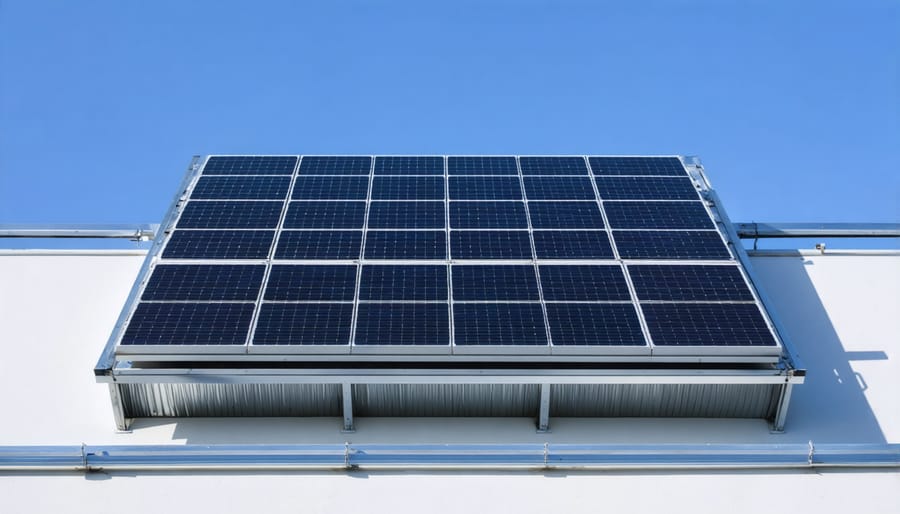
Real Benefits for Your Home
More Power from the Same Roof Space
PV thermal panels offer a remarkable advantage over traditional solar panels by maximizing the use of your available roof space. While conventional solar panel efficiency ratings typically range from 15-20%, PV thermal systems can achieve combined efficiency rates of up to 80% by capturing both electrical and thermal energy from the same surface area.
Think of it this way: where a standard solar panel would only convert sunlight into electricity, a PV thermal panel harvests that same sunlight for both electricity and hot water production. This dual-purpose functionality means you’re getting more energy from every square foot of your roof space. For homeowners with limited roof area, this can be a game-changer.
The increased efficiency isn’t just about space savings – it translates directly into greater energy output and reduced utility bills. A typical family home can expect to generate not only their daily electricity needs but also up to 60% of their hot water requirements from the same roof area that would traditionally only provide electricity.
Year-Round Energy Savings
PV thermal panels offer impressive year-round savings by tackling two major household expenses simultaneously: electricity and heating costs. During sunny days, these hybrid systems generate electricity while also capturing heat, providing hot water and space heating at a fraction of traditional energy costs. In winter months, when conventional solar panels typically see reduced efficiency, PV thermal panels maintain better performance by staying cooler, which helps optimize electricity generation.
The combined savings can be substantial – many homeowners report 40-60% reductions in their annual heating bills alongside 20-30% higher electrical output compared to standard solar panels. This dual functionality means you’re maximizing every square foot of roof space and getting more value from a single installation.
What’s particularly appealing is the system’s ability to contribute to energy savings even on cloudy days. The thermal component continues to capture ambient heat, ensuring you benefit from the installation year-round. For a typical household, this can translate to thousands of dollars in annual energy cost reductions while significantly lowering your carbon footprint.
Smart Temperature Management Features
Keeping Panels Cool for Peak Performance
Just like your car’s engine performs better when it’s not overheating, solar panels work more efficiently when they stay cool. As sunlight hits your panels, they naturally heat up – but this heat actually reduces their electrical output. For every degree above their optimal temperature (around 77°F or 25°C), solar panels typically lose 0.3-0.5% of their power generation capability.
PV thermal panels tackle this challenge head-on by using a cooling system that circulates fluid beneath the panels. This innovative design serves two purposes: it keeps the panels operating at peak efficiency while capturing the excess heat for household use. The cooled panels can produce up to 15% more electricity compared to standard solar panels on hot summer days.
The cooling effect is particularly beneficial in warm climates where traditional solar panels might struggle with efficiency losses. The captured heat isn’t wasted – it’s used for water heating, space heating, or even pool warming, making the entire system more energy-efficient.
Think of it as getting more bang for your buck: not only do you maintain optimal electrical production, but you also get free thermal energy that would otherwise be lost to the environment. This dual benefit makes PV thermal panels an intelligent choice for homeowners looking to maximize their renewable energy investment.
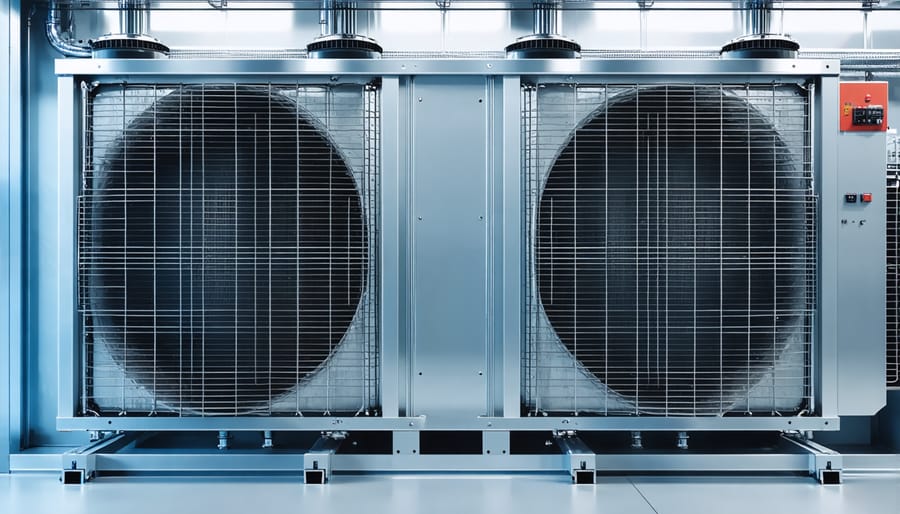
Using Captured Heat Effectively
The thermal energy captured by PV thermal panels can be put to work in multiple ways around your home, making these systems incredibly versatile. The most common application is domestic water heating, where the collected heat warms your household’s water supply, significantly reducing water heating costs throughout the year.
Space heating is another valuable use, particularly during cooler months. The captured heat can be integrated with your home’s existing heating system, whether it’s forced air or radiant floor heating. During summer, when space heating isn’t needed, you can direct the thermal energy to heat your swimming pool or spa, extending your swimming season while keeping operating costs low.
Some homeowners use the collected heat for specialized applications like greenhouse heating or snow melting on driveways. The heat can even support certain industrial processes or agricultural operations, such as crop drying or maintaining optimal temperatures in farm buildings.
To maximize efficiency, many homeowners combine these applications seasonally. For example, you might prioritize domestic water heating year-round, use the excess heat for space heating in winter, and switch to pool heating in summer. This flexibility ensures that virtually no captured heat goes to waste, maximizing your system’s value and environmental benefits.
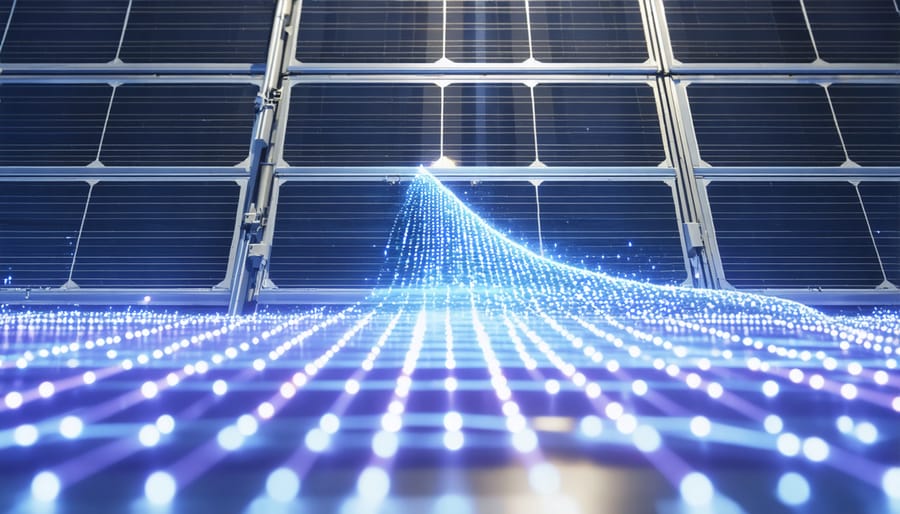
Installation and Maintenance Considerations
Installing PV thermal panels requires careful planning and professional expertise. Before installation, have a qualified contractor assess your roof’s structural integrity and determine the appropriate size solar system for your home. The optimal orientation is typically south-facing with a 30-45 degree tilt, though this may vary based on your location.
Professional installation typically takes 2-3 days and involves mounting the panels, connecting the thermal fluid system, and integrating with your existing heating and electrical systems. It’s crucial to ensure proper weatherproofing around roof penetrations to prevent any leaks.
Maintenance is relatively straightforward but essential for optimal performance. Regular tasks include:
– Annual professional inspection of the system
– Cleaning panels every 6-12 months
– Checking fluid levels in the thermal system
– Monitoring system performance through the control panel
– Inspecting pipe insulation and connections
Most systems come with monitoring capabilities that alert you to any issues, making maintenance more manageable. While PV thermal panels are generally durable with lifespans of 20-25 years, scheduling regular maintenance checks helps ensure maximum efficiency and longevity.
Remember to keep trees trimmed to prevent shading and remove any debris that might accumulate on the panels. Winter maintenance may require additional attention to prevent snow accumulation and ensure the thermal fluid maintains proper antifreeze properties.
PV thermal panels represent a significant leap forward in sustainable home energy solutions, offering a powerful combination of electricity generation and water heating in a single system. By investing in this technology, homeowners can significantly reduce their carbon footprint while enjoying substantial savings on their energy bills. The dual functionality not only maximizes roof space efficiency but also provides year-round benefits, from solar power generation in sunny weather to hot water production throughout the seasons. With increasing energy costs and growing environmental concerns, now is the perfect time to consider PV thermal panels for your home. Take the first step towards energy independence and sustainable living by consulting with a qualified installer to discover how this innovative technology can benefit your specific situation.

